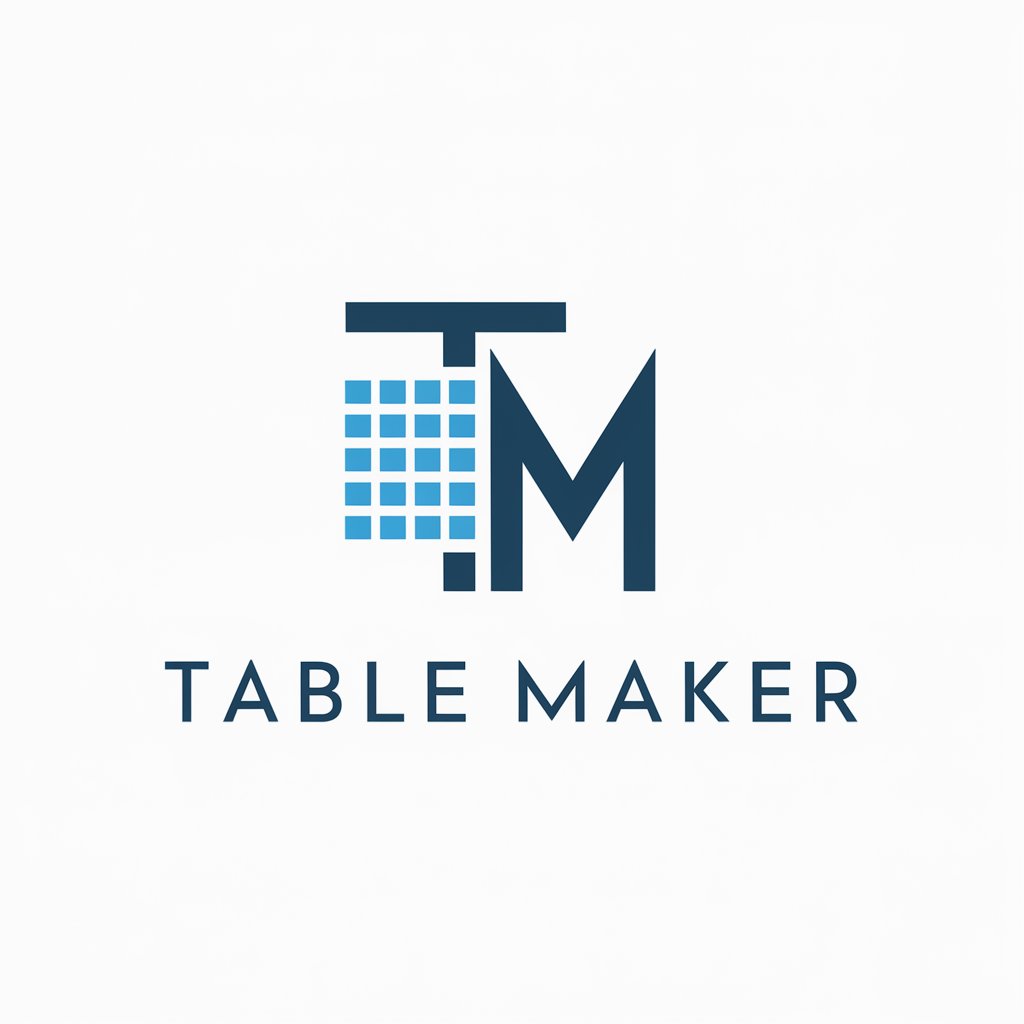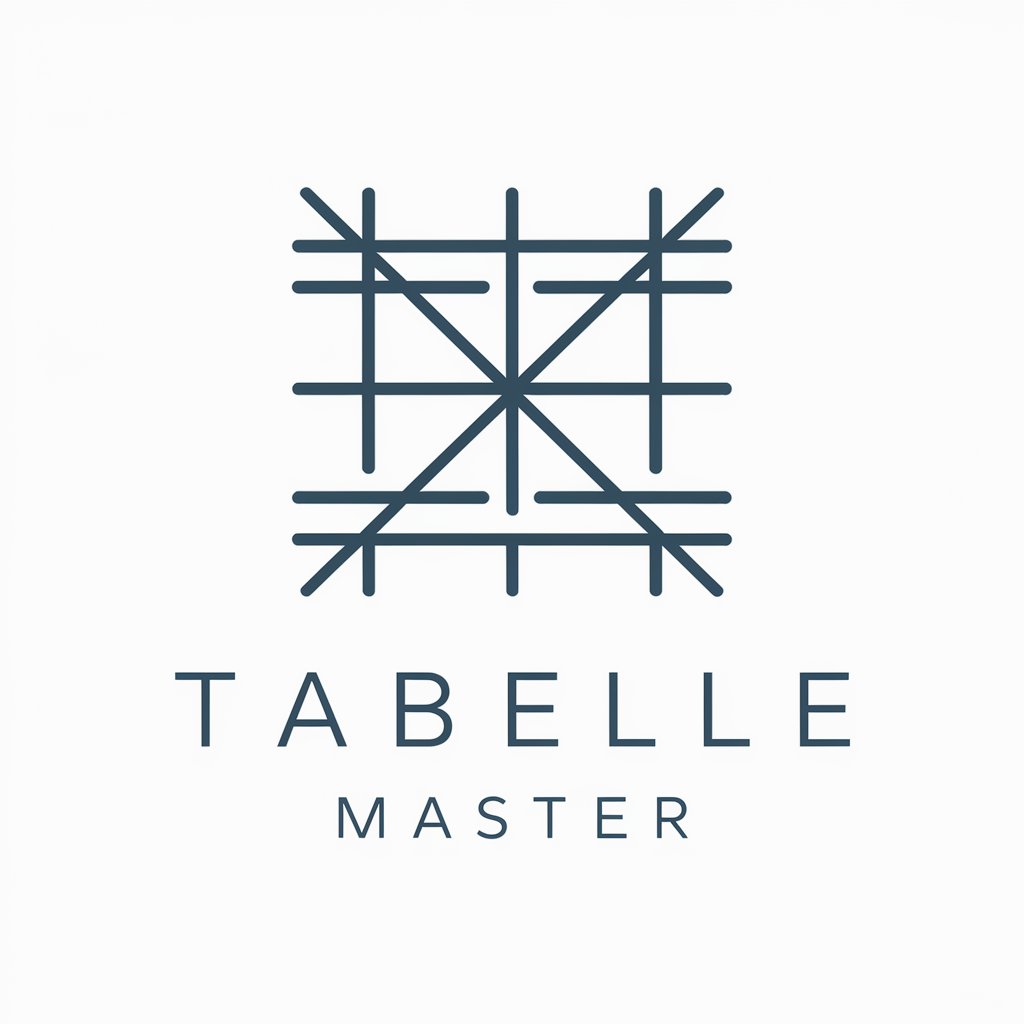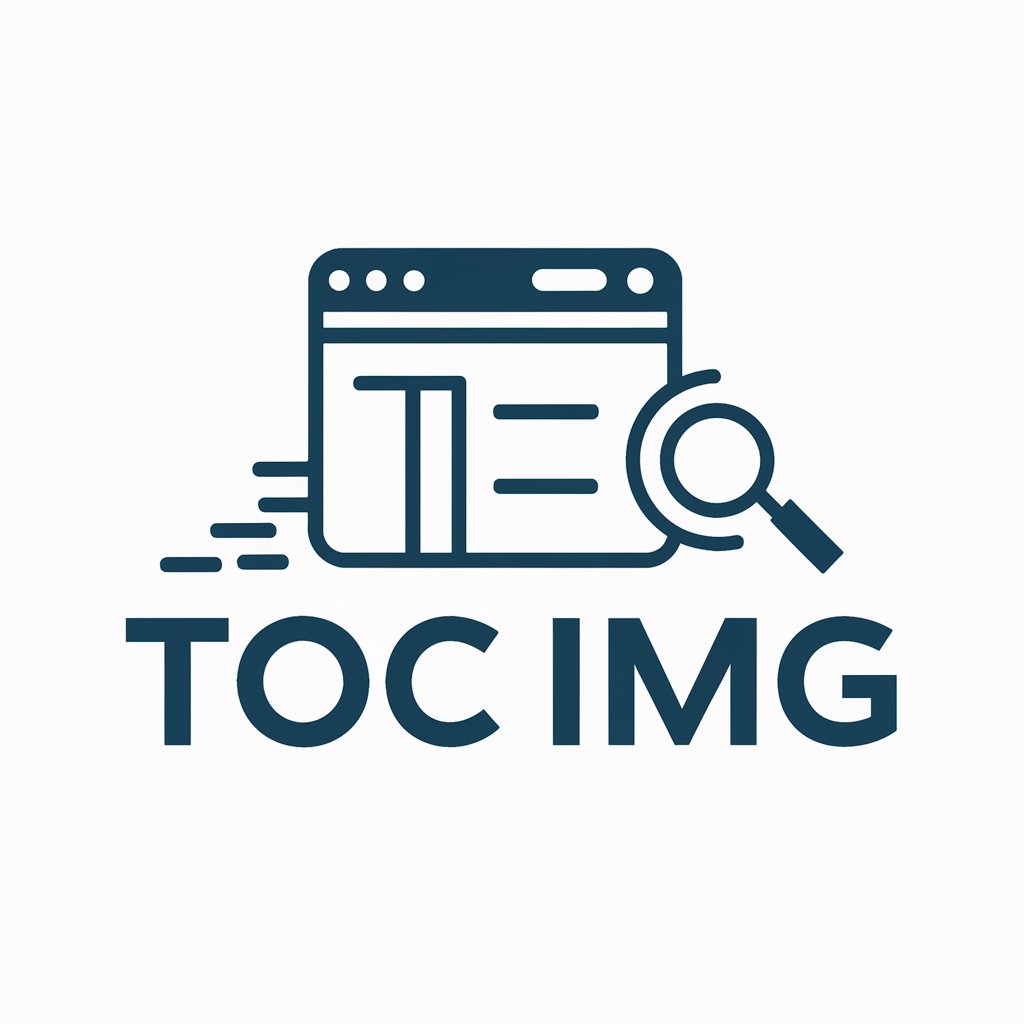
Table Master - AI-powered Data Tabulation

Hello! I'm eager to assist you today!
Simplifying Data into Tables with AI
Can you help me with...
I need assistance with...
What's the best way to...
Could you explain how to...
Get Embed Code
Introduction to Table Master
Table Master is a specialized GPT designed to assist users with tasks that involve tables, data organization, and information synthesis. It is adept at handling, analyzing, and transforming tabular data, making it an invaluable tool for users who frequently work with spreadsheets or databases. Table Master can generate tables from textual descriptions, extract and summarize information from complex datasets, and assist in data visualization. For example, if a user needs to compare sales data across different regions, Table Master can create a comparative table, highlighting key trends and insights. Powered by ChatGPT-4o。

Main Functions of Table Master
Data Table Creation
Example
Generating a table from a list of items with properties like 'Name', 'Category', and 'Price'.
Scenario
A user provides a list of products with their categories and prices. Table Master organizes this data into a structured table, making it easier to analyze and share.
Data Extraction and Summarization
Example
Extracting specific data from a large dataset, like sales figures for a particular quarter.
Scenario
When a user has a large dataset and needs to quickly extract specific information, such as quarterly sales figures, Table Master can isolate and present this data succinctly.
Data Visualization Assistance
Example
Creating visual aids like graphs or charts based on tabular data.
Scenario
A user has tabular data that needs to be represented visually. Table Master can assist in creating charts or graphs, enhancing the data's readability and impact.
Ideal Users of Table Master Services
Data Analysts and Researchers
Professionals who handle large datasets and require efficient ways to organize, analyze, and present data. Table Master aids in streamlining their workflow, from data entry to analysis.
Students and Educators
Individuals in academic settings can use Table Master to organize research data, create tables for reports, or analyze statistical information for projects and presentations.

How to Use Table Master
Start for Free
Head over to yeschat.ai to explore Table Master with a free trial, no login or ChatGPT Plus required.
Identify Your Needs
Determine the specific task you need assistance with, such as data organization, comparison tables, or information summarization.
Input Your Data
Enter your data or describe the information you want to process. Table Master can handle various formats and types of input.
Customize Your Table
Use the customization options to specify how you want your table to look or function. Options include sorting, filtering, and visual styling.
Export or Share
Once satisfied with your table, you can export it in multiple formats or share it directly from the platform.
Try other advanced and practical GPTs
Topper's Table
Elevate Your Game with AI

Recording Transcript Summarizer for Executives
AI-powered Executive Meeting Summarization

Home Recording Studio Assistant
Elevate Your Sound with AI-Powered Studio Assistance

Recording Insight Assistant
Unlocking Insights with AI Analysis

Online Paraphrasing Tool
Revolutionize Your Writing with AI
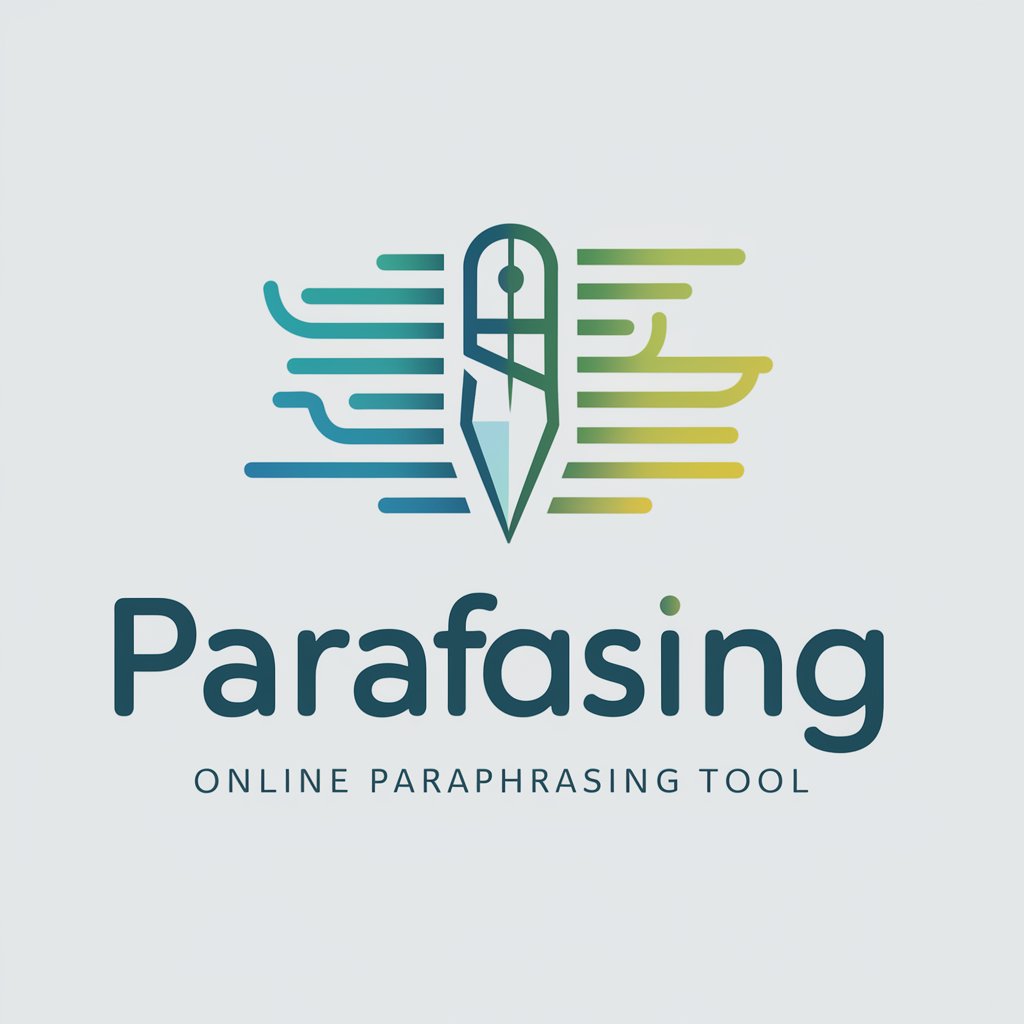
Sentence Sculptor
AI-powered Text Transformation

Table Master
Simplify Data with AI-Powered Tables

Nature's Table
Elevate vegan cuisine with AI-powered guidance.

table
Simplifying Learning with AI-Powered Tables
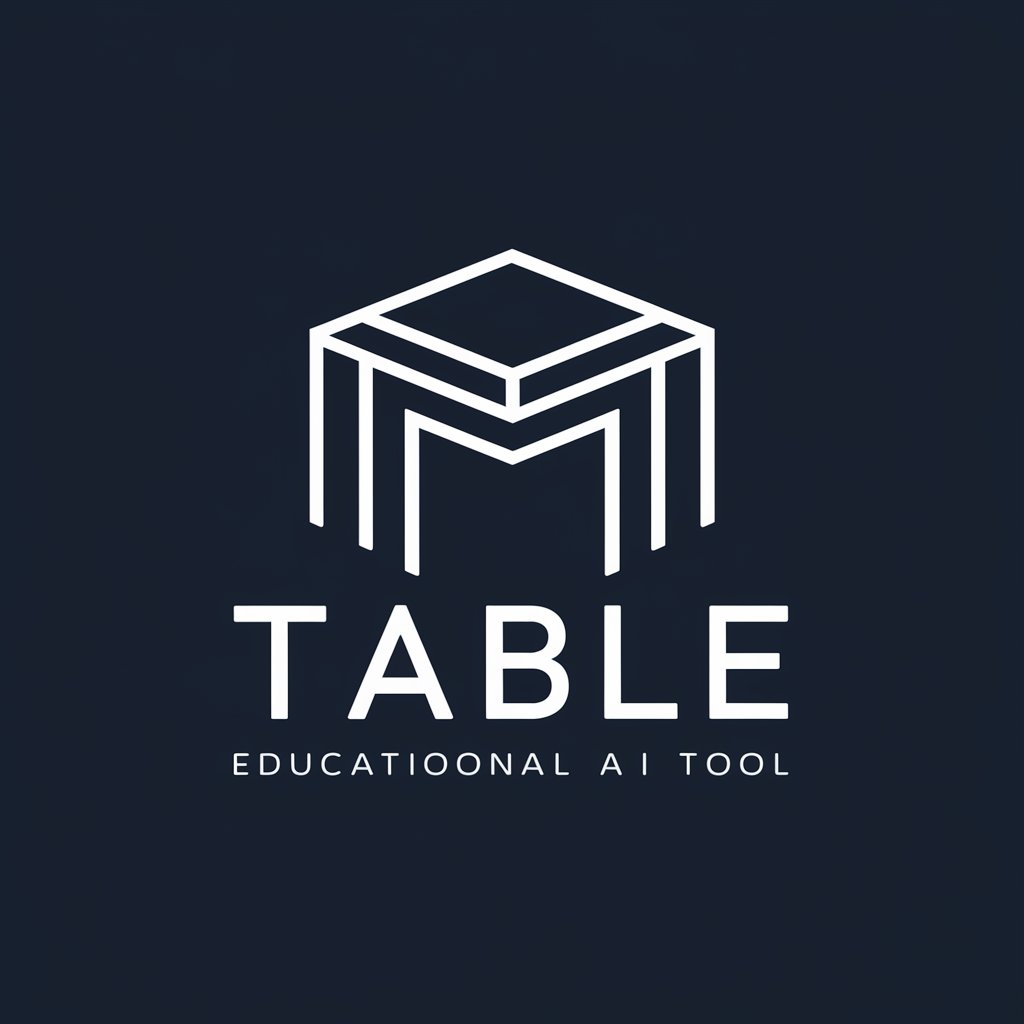
Periodic Table
Exploring chemistry with AI-driven insights

Pharm Lecture Table Maker
Streamlining pharmacology study with AI

Table Extractor Pro
Extract table data effortlessly with AI

Table Master Q&A
What makes Table Master unique?
Table Master stands out for its ability to process and transform raw data into organized, visually appealing tables with minimal user input, leveraging AI for intuitive data management.
Can Table Master handle large datasets?
Absolutely, Table Master is designed to efficiently manage and organize large datasets, providing users with quick and coherent summaries and comparisons.
Is Table Master suitable for academic research?
Yes, it's particularly valuable for academic research, offering tools for data organization, citation management, and the synthesis of complex information into comprehensible tables.
How does Table Master ensure data privacy?
Table Master employs stringent data protection measures, including encryption and anonymization, to ensure all user data remains private and secure.
Can I customize tables for specific needs?
Definitely, Table Master provides extensive customization options, allowing users to tailor tables for various scenarios, from business reports to academic papers.
